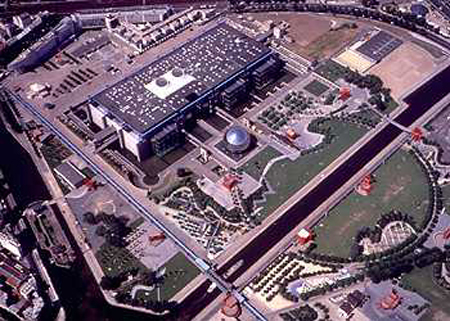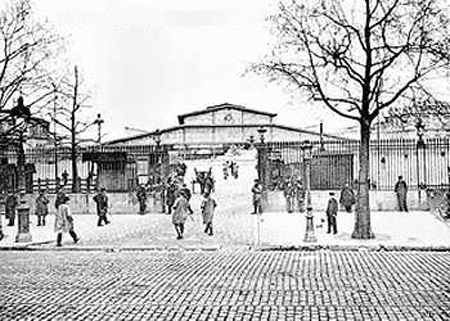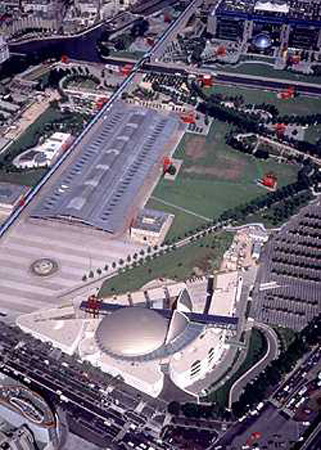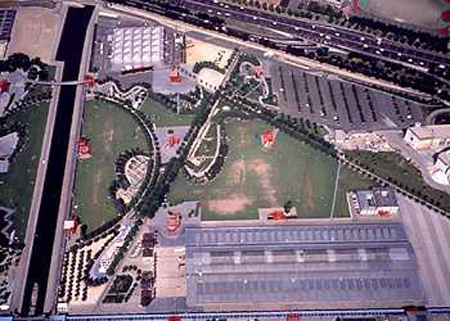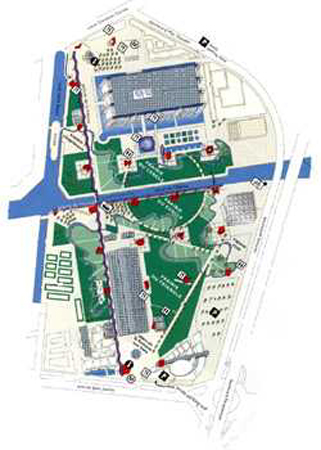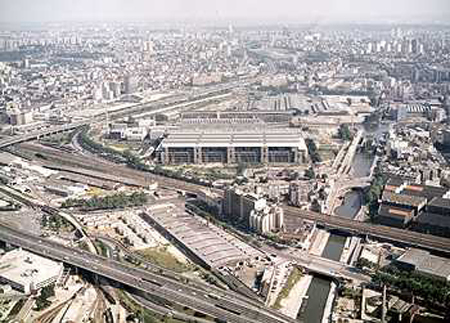Previous state
The site of La Villette had always been a zone of transition and interchange. During the 18th century, La Villette became an obligatory point of transit for goods being transported on the roads to Flanders and Germany. During the following century, the channelling of the waters of the Ourcq, the building of the huge reservoir which supplied Paris with drinking water, and the opening of the Saint-Denis and Saint-Martin canals, made it a centre for trade and industry which reached its peak with the arrival of the railway in 1852. However, its destiny was mapped out in 1867, when Haussmann's redevelopment plan for the city earmarked the site as the location for the large municipal slaughterhouses and livestock market. These were maintained until 1974, the date when the entire complex closed down. From that time on, there began a period of reflection concerning possible new uses for this former industrial space in the centre of a working-class suburb.Aim of the intervention
In 1979, the Établissement public du parc de la Villette (Public Body for the Parc de la Villette) was set up and assigned the task of redeveloping the site according to the guidelines stipulated: to create a city park, open to everyone, which would link up a national museum of science and technology and a concert hall. Later, the project became more clearly defined when a decision was taken to build the Cité de la Musique (City of Music), which was to house the music museum and the conservatoire.It was a question of defining a new kind of park with a marked programmatic content of public buildings; a new generation of park which would also be one of the biggest green spaces in Paris, serving the whole metropolis, and would, for this very reason, become a major cultural facility, a "multipurpose cultural complex", a genuine urban cultural park in the open air.
Description
The park's 35 ha. green area was designed to link up the two basic cultural poles in the complex: the Cité des sciences et de l’industrie (City of Science and Industry) and the Cité de la Musique. In order to be able to cross the park, a system of walkways was created; these run throughout the entire park and link up its different cultural facilities. Thus, the Galerie de la Villette, characterised by its undulating roof, runs the full length of the park and creates a link between the two cultural poles mentioned above. The Galerie de l’Ourq, perpendicular to the former, runs parallel to the canal of the same name which cuts through the site of the park itself, as it has done since it was built in the last century.Next to these two rectilinear walkways, we find a path, three kilometres in length, which winds through the park and allows us to walk inside La Villette and discover a number of landmarks and ten thematic gardens, created with built elements as well as natural ones: the garden of mirrors, the garden of the winds and dunes, the garden of bamboo, the garden of the dragon, among others.
The entire park is dotted with small red constructions in a diversity of shapes, known as the folies, a contemporary version of rotundas, which are clearly the project’s most original and visible architectural design. Besides the multitude of gardens, play and activity areas, there are two extensive green spaces, the prairie du cercle and the prairie du triangle, which comprise two open spaces where visitors can relax.
Close to the Cité de la Musique, we highlight the largest building preserved from the former industrial site: the Grande Halle, which is used for all kinds of cultural events.
Assessment
La Villette is a unique complex which has linked up 55 ha. of nature and architecture, leisure and culture, and is, at the same time, the biggest green space in Paris.It is considered the prototype of a 21st-century park, which caters for the different components of contemporary urban leisure: cultural activities of all kinds in a setting with a clear vocation to provide a green space.
The creation of La Villette has been part of a more widespread policy on a metropolitan scale, which tries to restore the balance in Paris towards the east side of the city. In this respect, it has fulfilled a clear role whereby it has restructured a transitional zone between the city and its periphery, which had been largely abandoned until recently.
[Last update: 02/05/2018]




